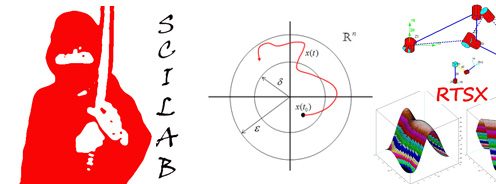
Warning : This is an outdated material. It is provided here for reference only. Some links may no longer work.
As an instructor who has been teaching industrial robotic courses for more than 10 years, I know too well the difficulty in explaining, without computer aids, topics such as kinematics in 3-D to students. A simple example about rotating coordinate frames could be hard to visualize and comprehend on a flat whiteboard or paper. As computer technology matures, I continue to look for good software tools to supplement my course. Robotic Toolbox by P.I.Corke stays as my favorite choice for some time in terms of well-written documents, up to date, adaptability, and ease of use. The main obstacle for a developing country like Thailand is that it requires MATLAB/Simulink from The MathWorks, Inc , which is available only on computer networks of major universities. Most Thai students, unfortunately, could not afford even the student version of this proprietary software.
Due to such inconvenience, I have switched to the open-source alternatives, Scilab/Xcos or Scicos, to solve engineering problems and strongly endorse them in my courses. The current version of Scilab (5.3.3 at the time of this writing) is quite stable and professional enough for both academic and industrial uses. I searched for robotic tools for Scilab on the internet and,to my dismay, found only some outdated work that could not be used with newer versions of Scilab. So my first attempt was to port Prof.Corke’s Robotic Toolbox for MATLAB (which from now on I will mention it as “rvctools” for short) to Scilab. I thought it should be painless, a thought that is now proved so wrong! While some basic functions might require only minimal efforts like changing the beginning of comment lines from % to //, that convenience could not apply to the rest. The most challenging ones are perhaps those graphic functions (plotting and animation) that I have to write them virtually from scratch. Another difficulty arises naturally when I realize the current Scilab doesn’t support OOP, while the robot models in rvctools are constructed as MATLAB objects. So doing such cool things like robot.plot( ) is not possible in Scilab.
Continue reading “Introduction to RTSX” →

